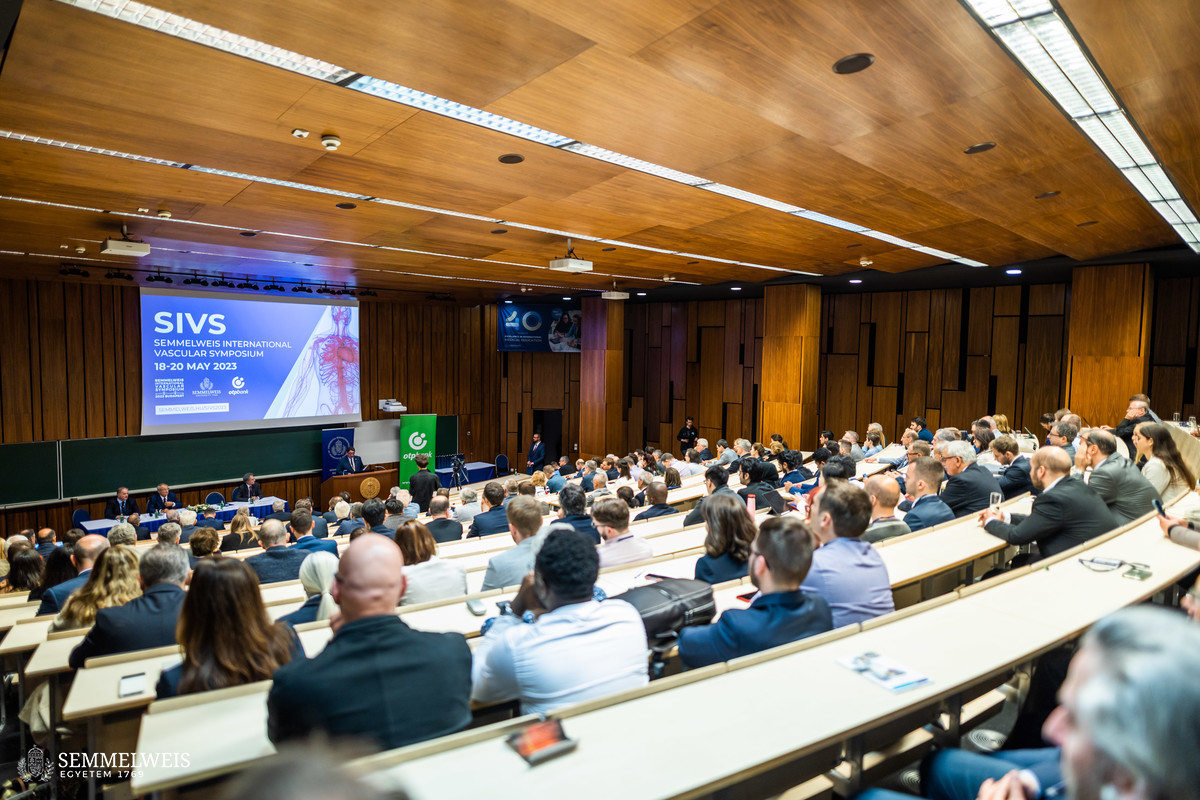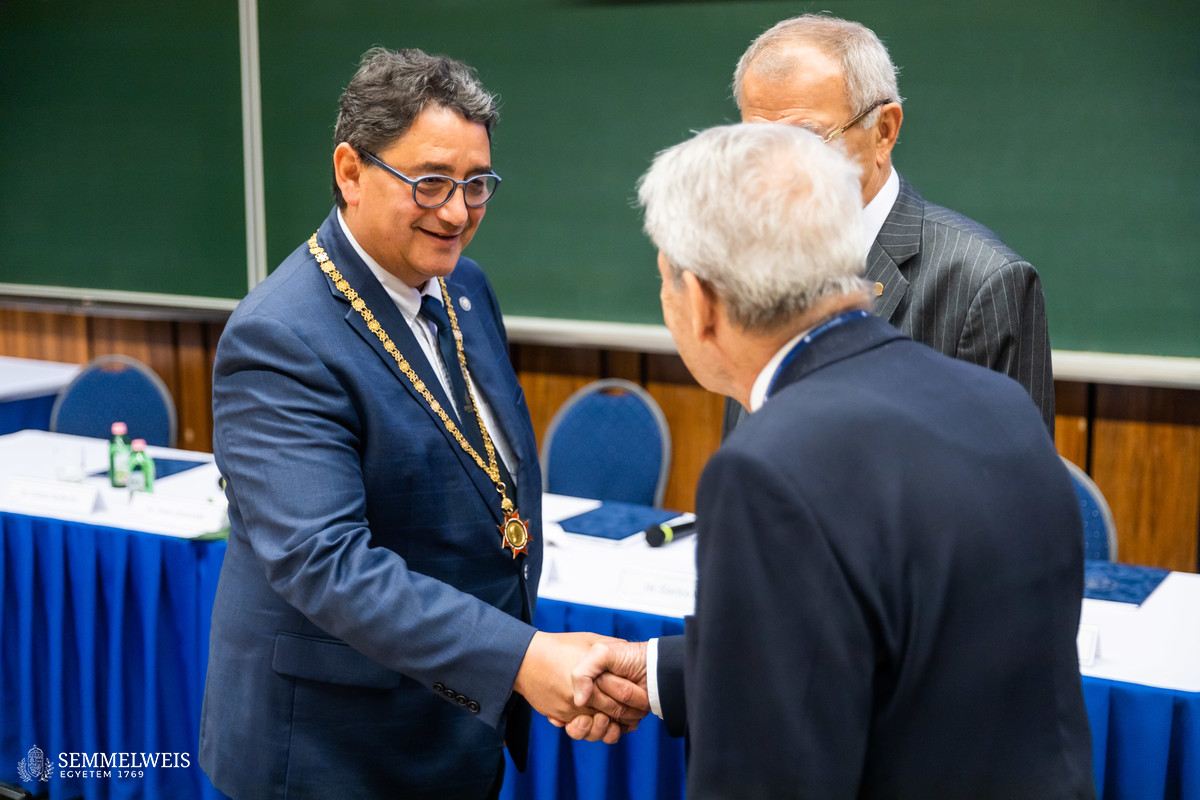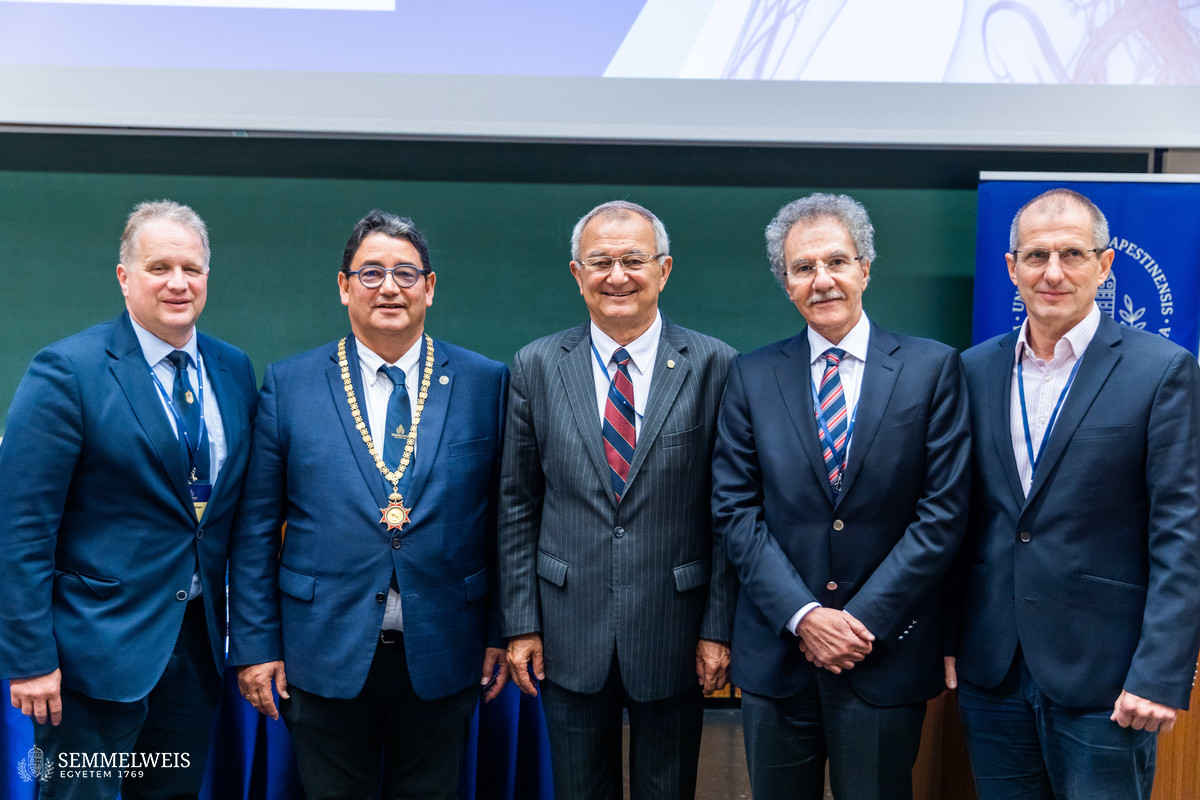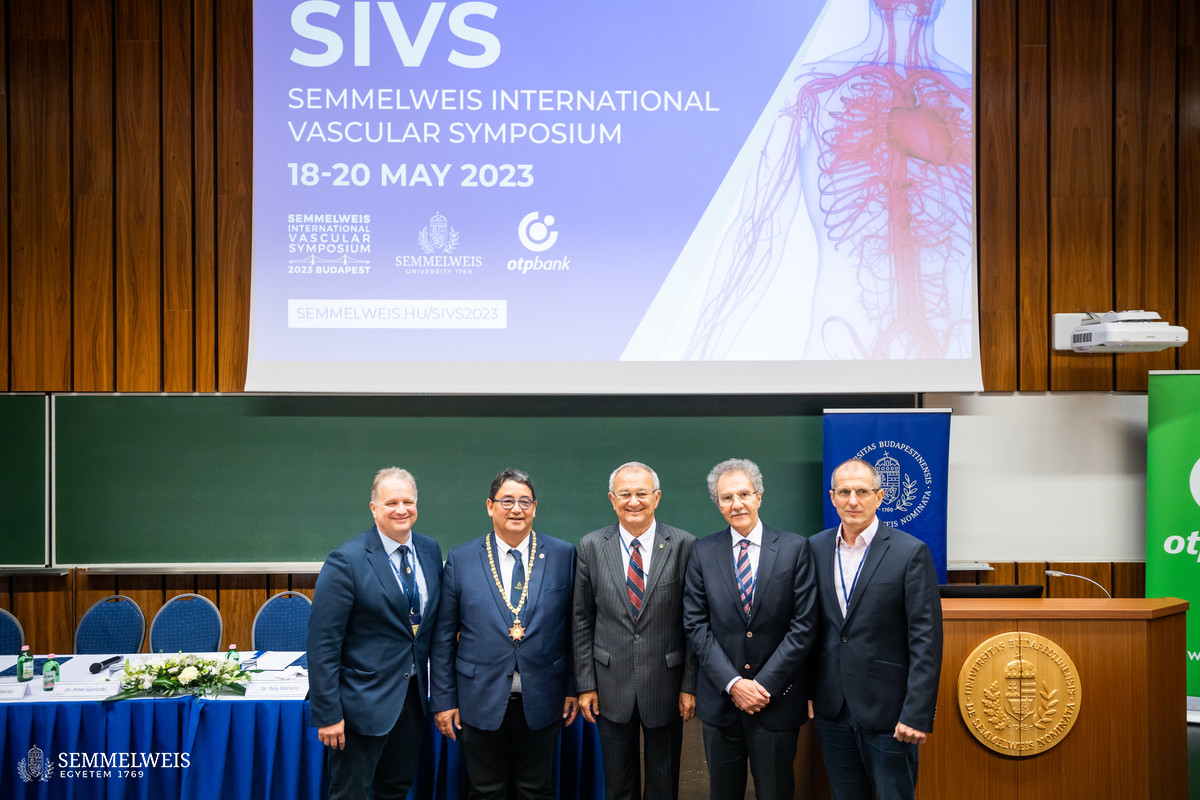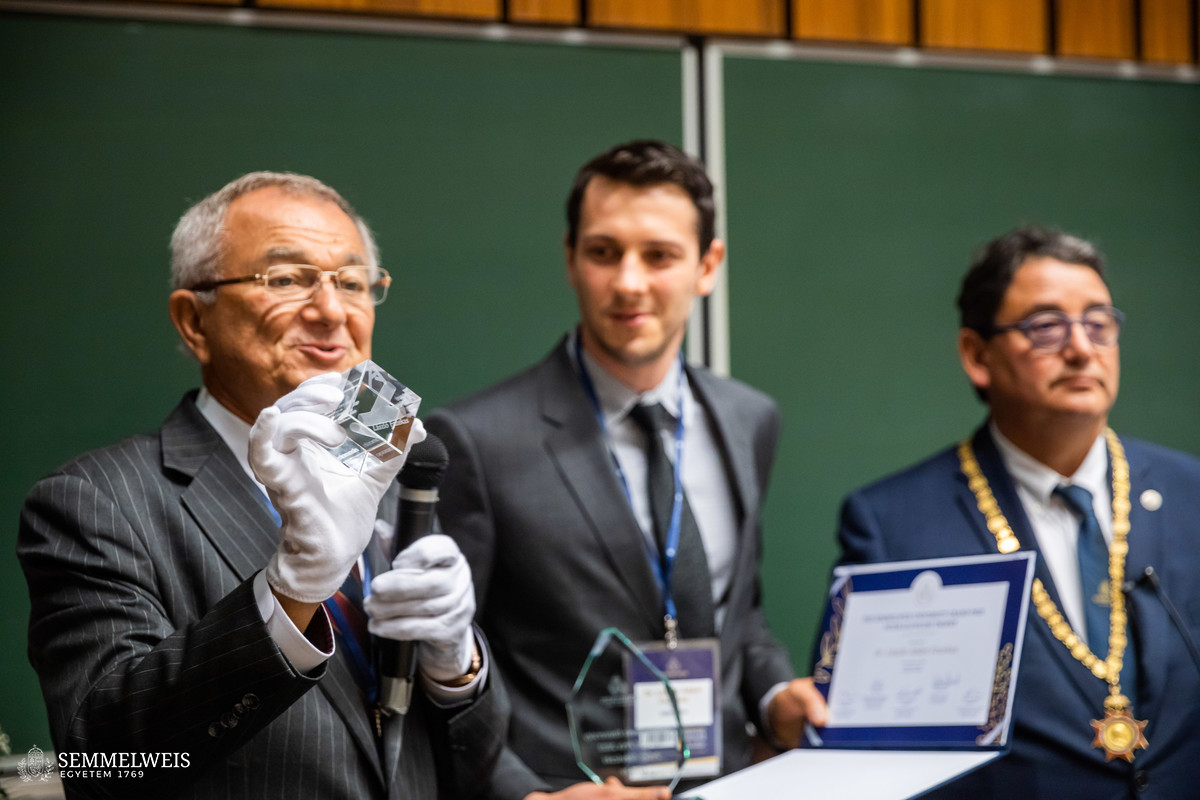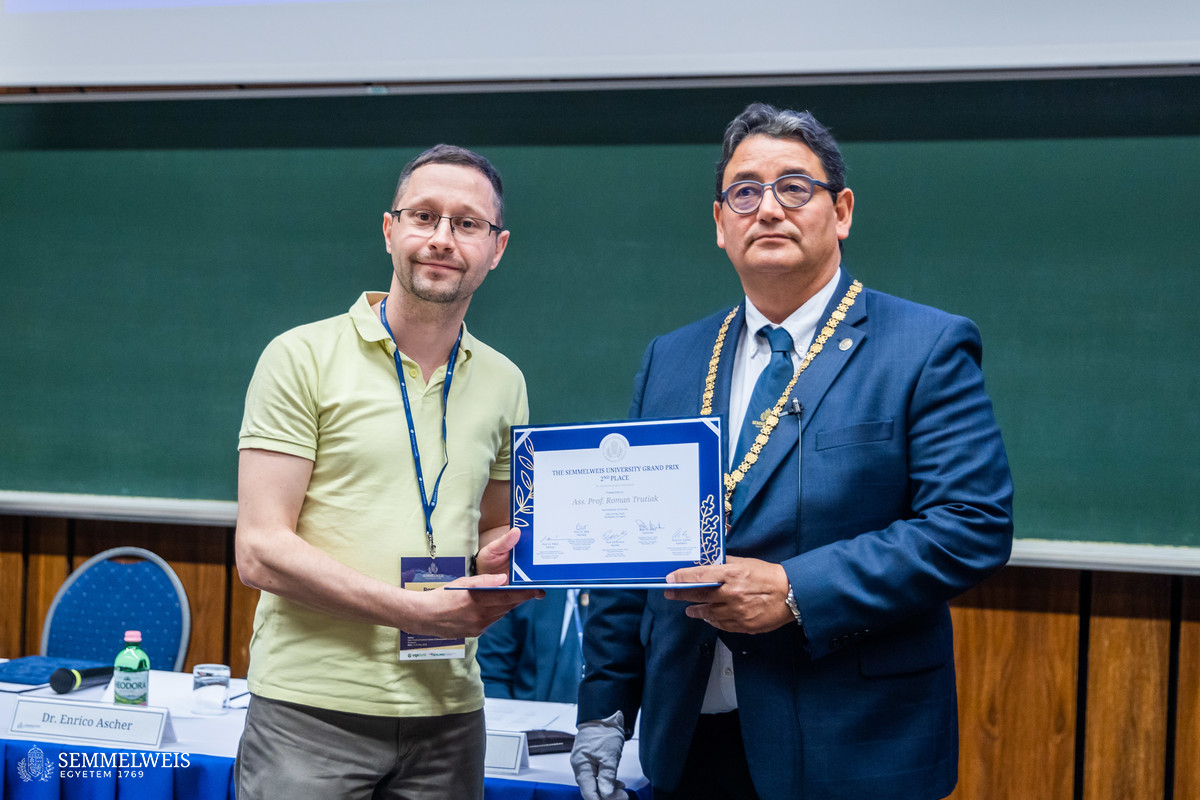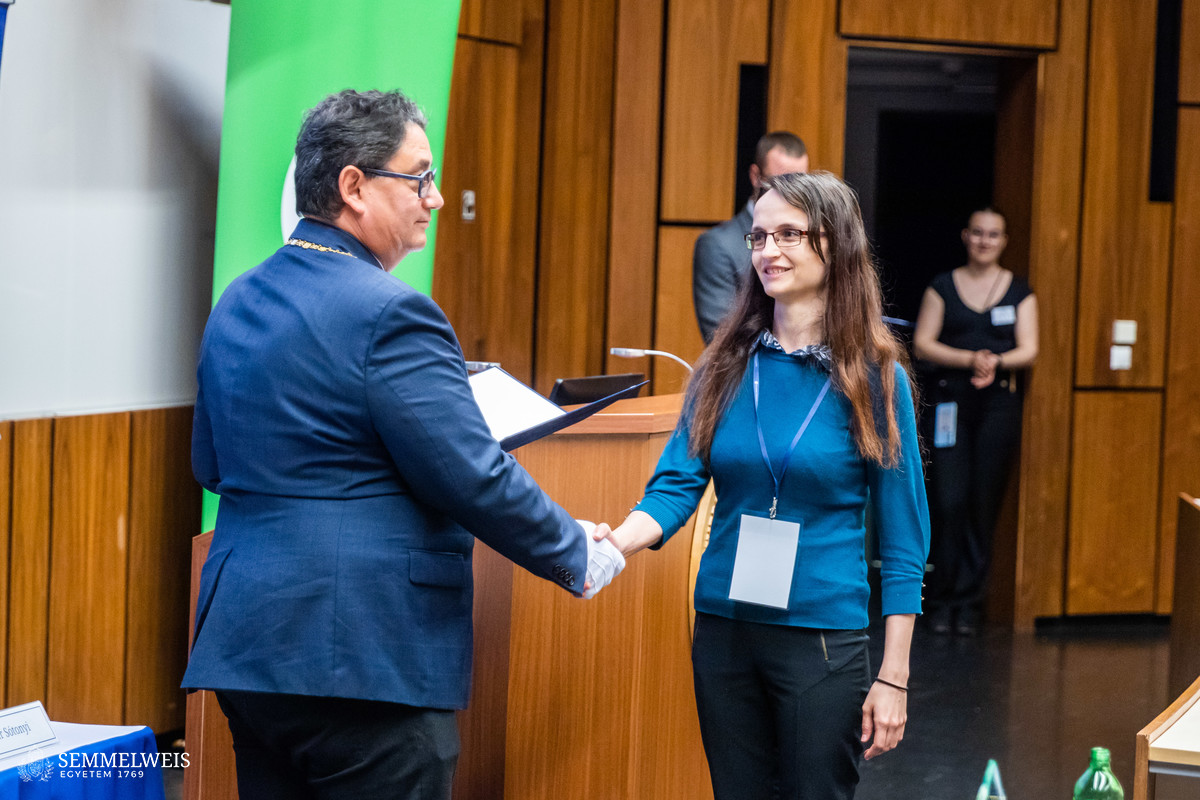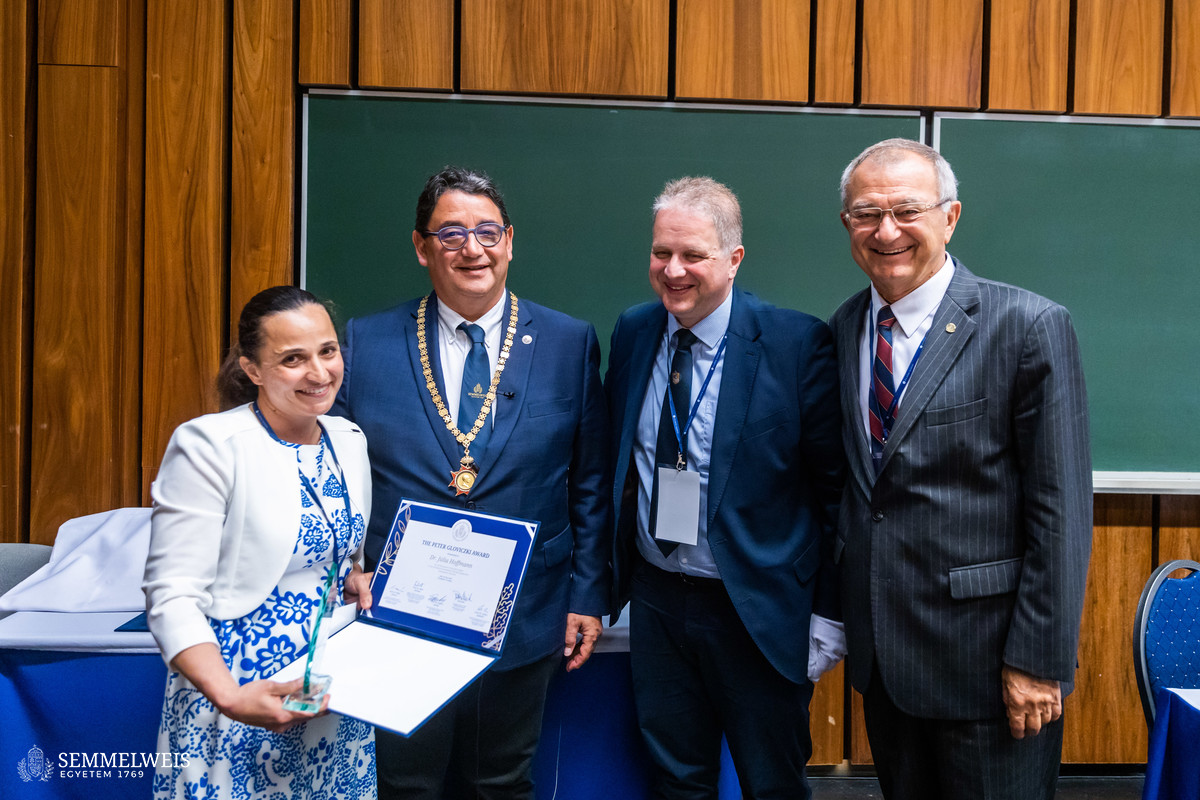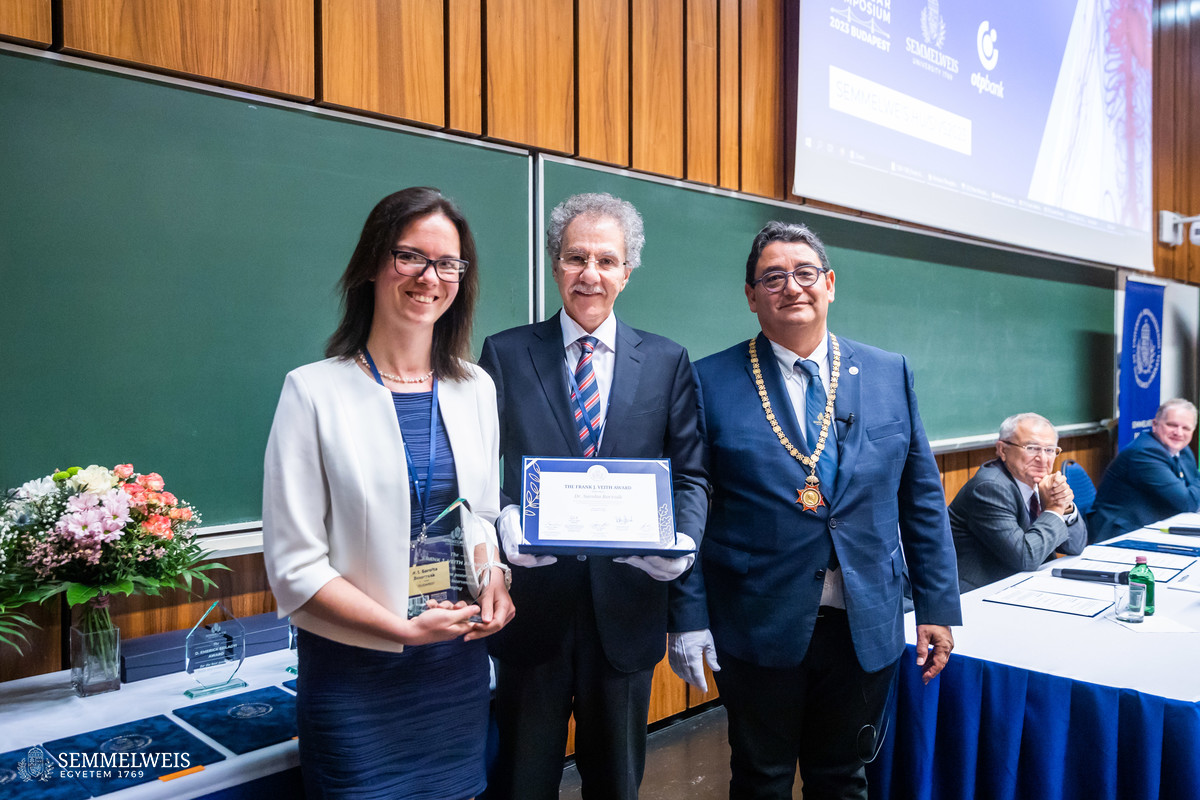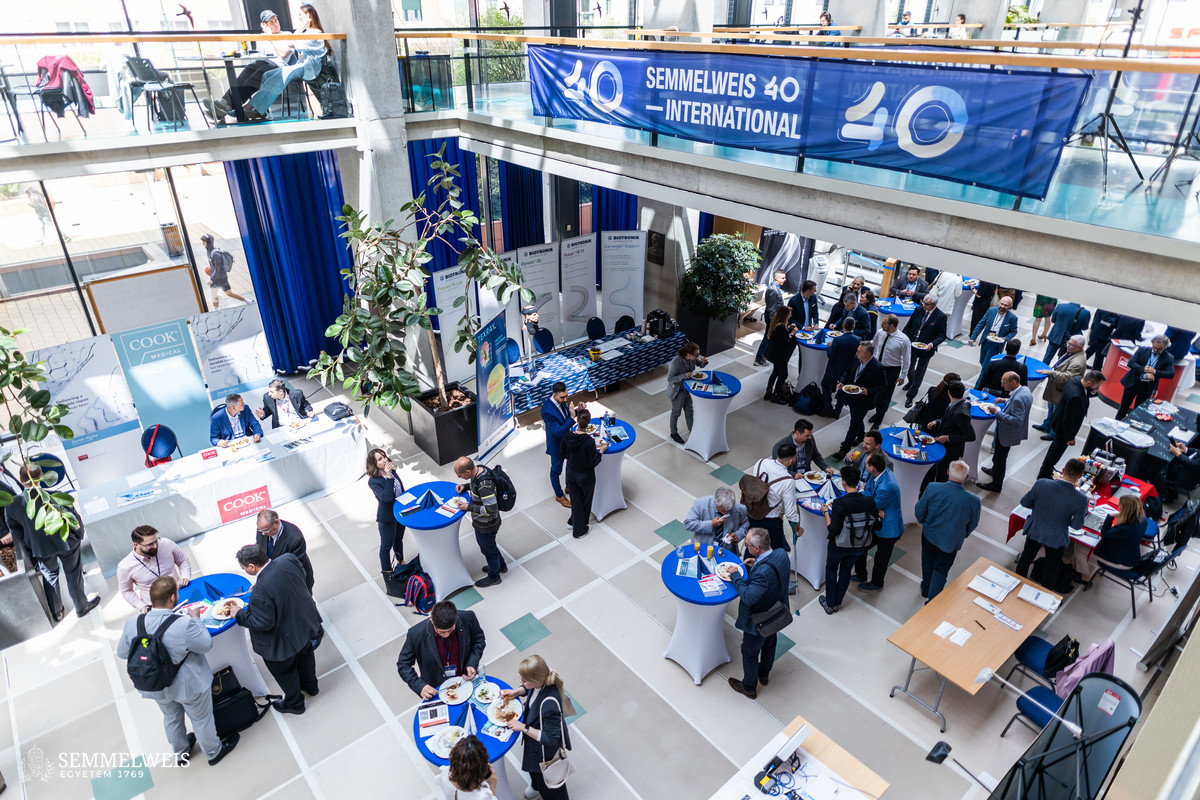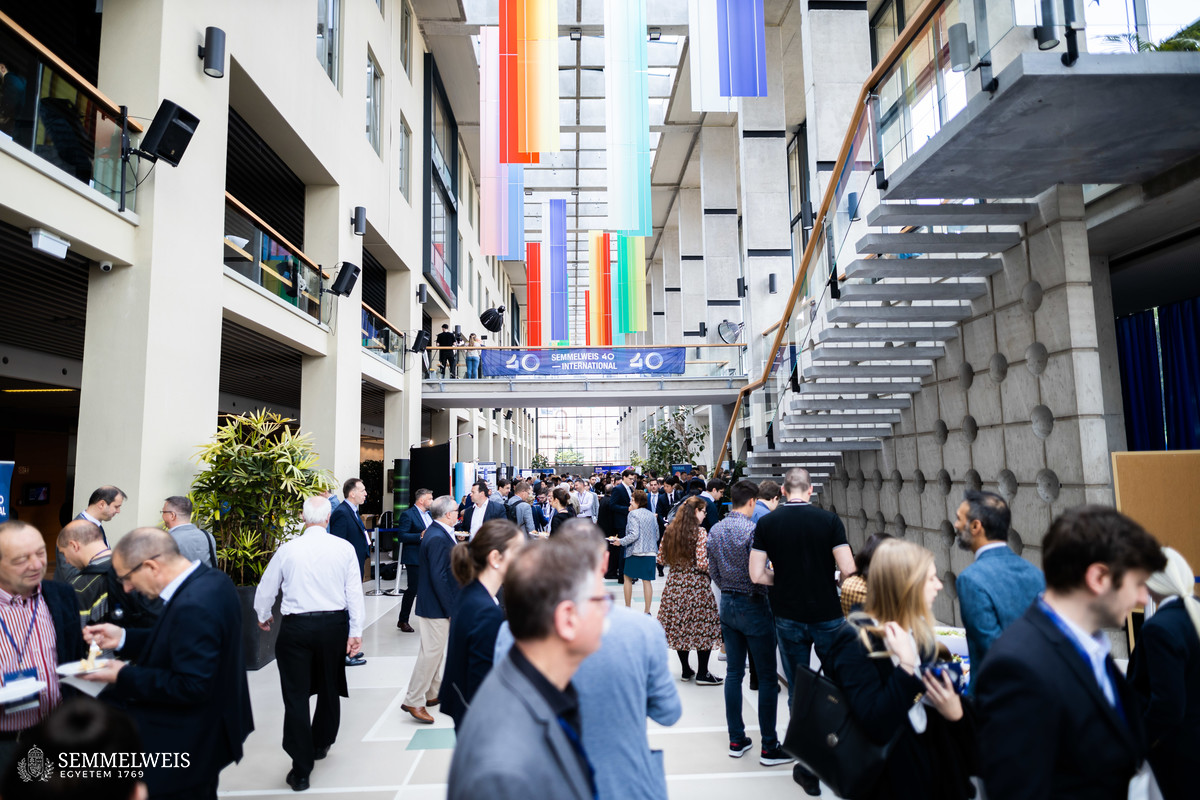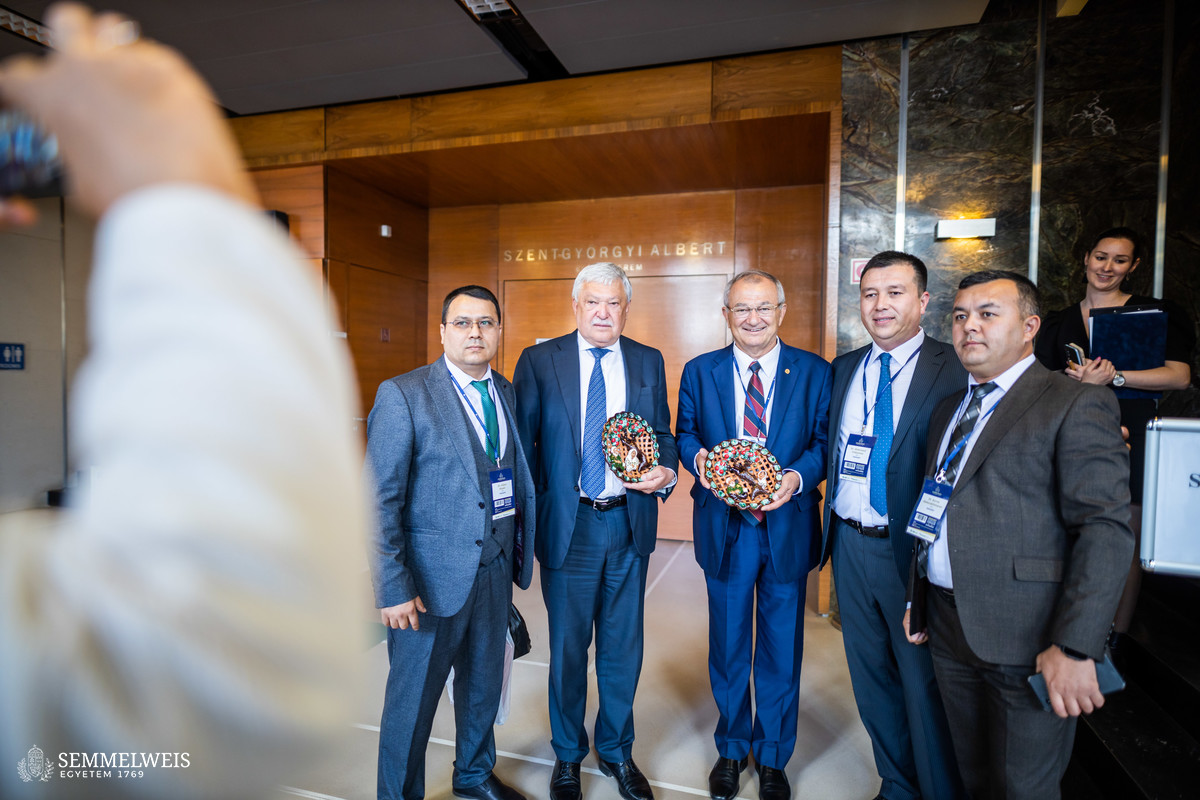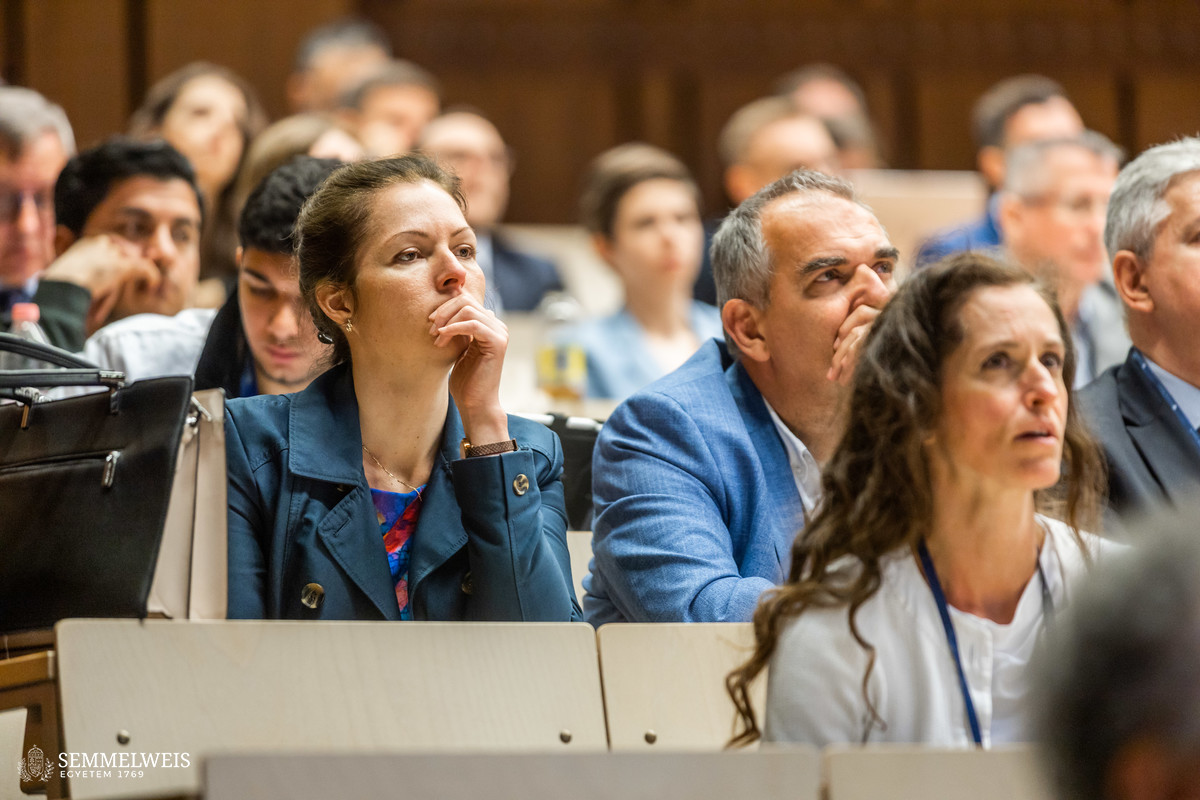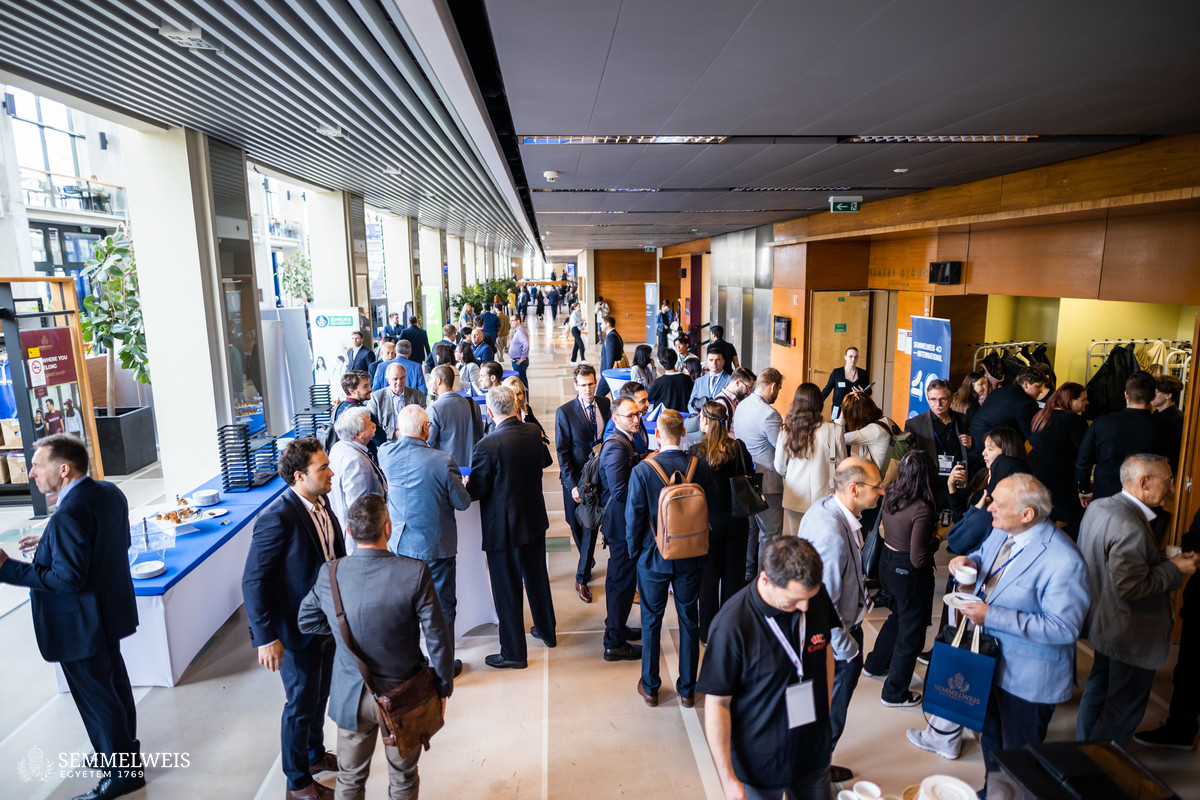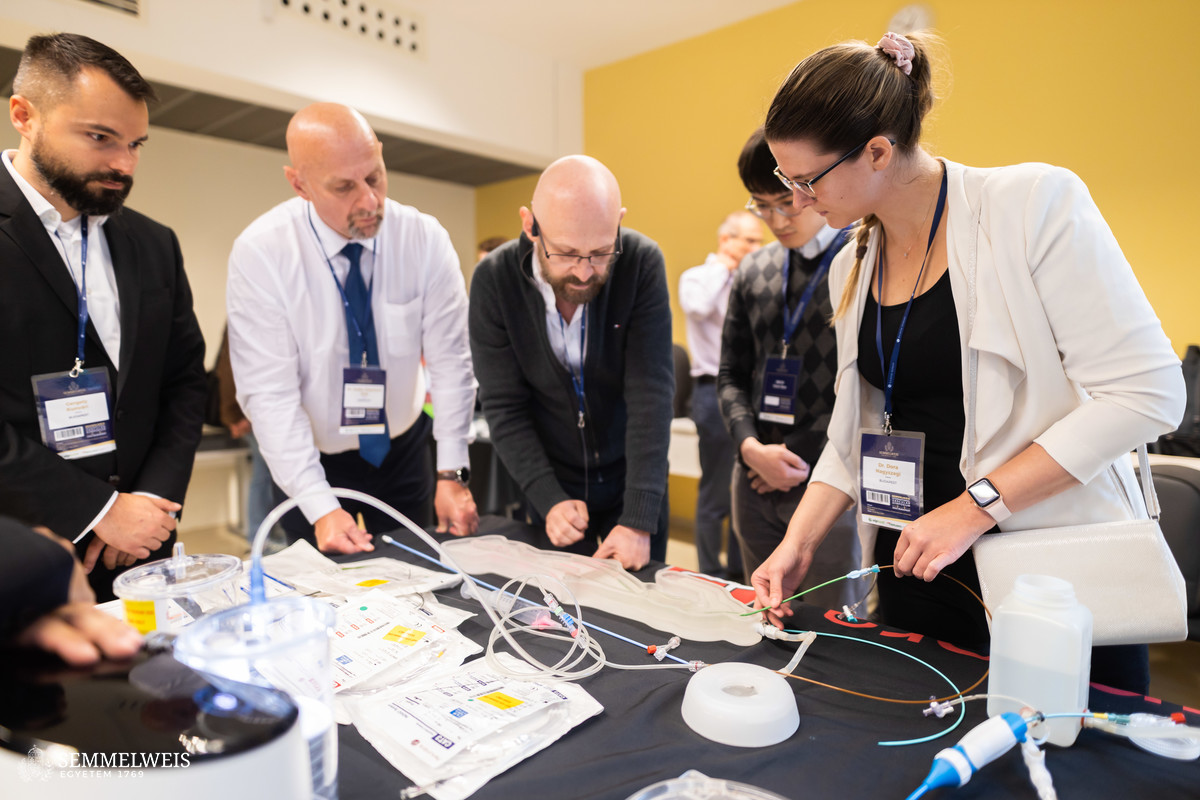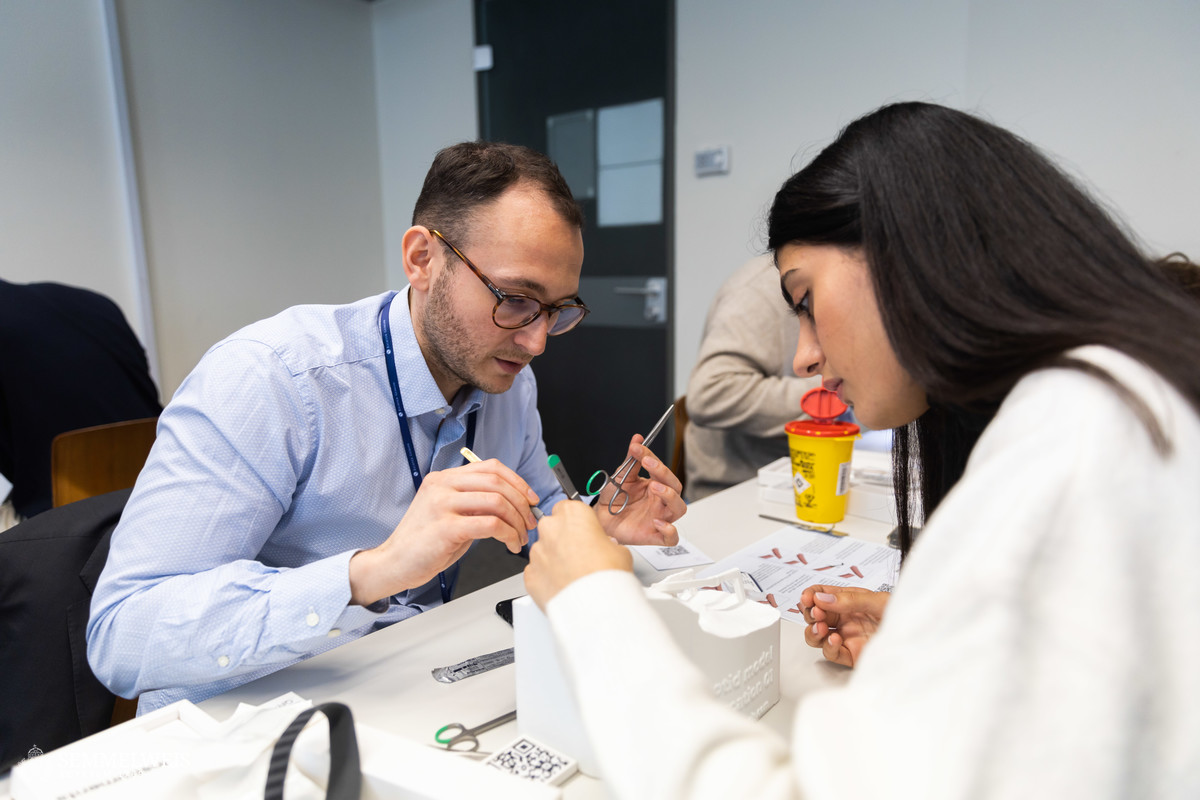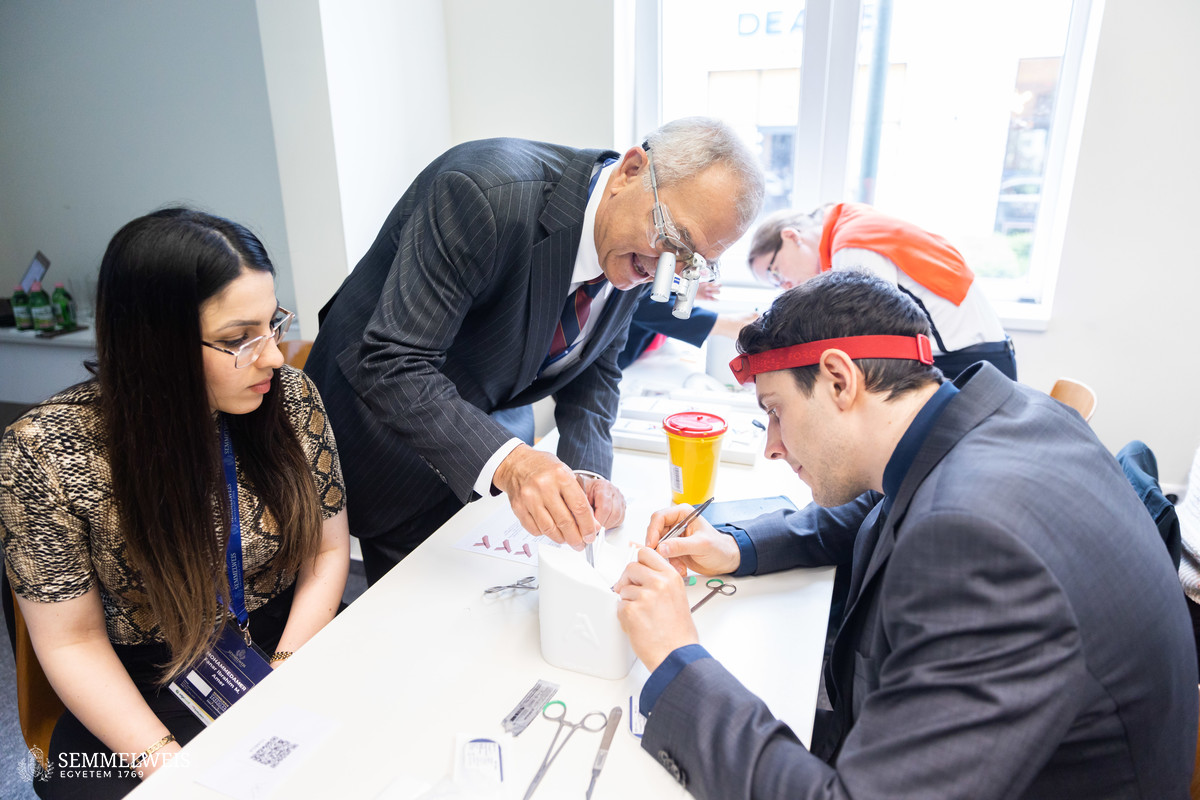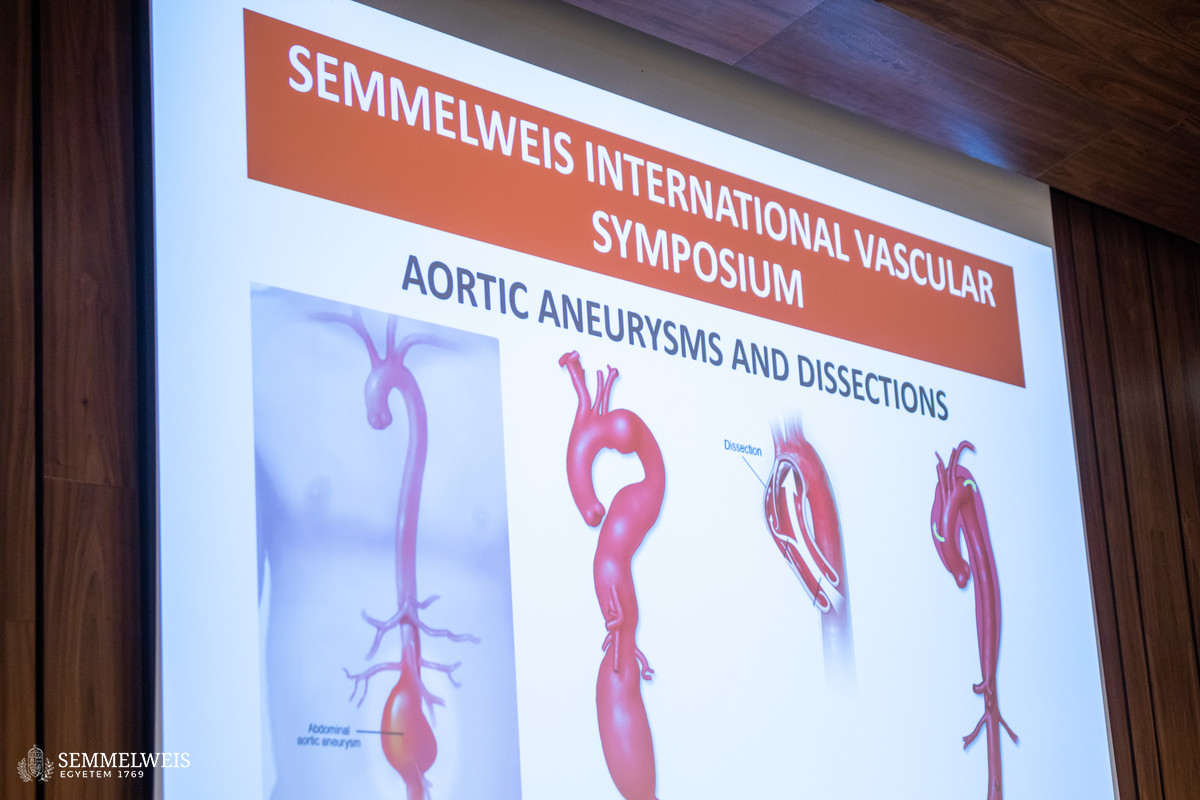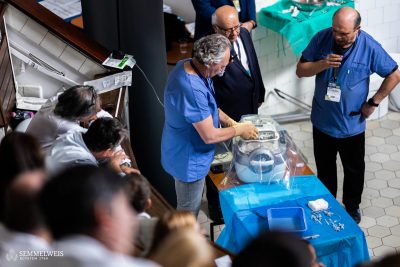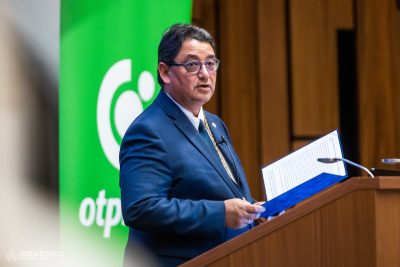 In his welcome speech, Rector Dr. Béla Merkely emphasized the importance of the practical implementation of theoretical knowledge, suggesting that equipped with actual experience, one can uncover the hidden layers of knowledge and thus of health. „This is the essence of the translational approach that characterizes our university, and is at the heart of this event as well,” he said. The rector went on to say that this is the first time Semmelweis organized such a broad international symposium on vascular medicine, welcoming prominent vascular surgeons, interventional radiologists, cardiologists, neuroradiologists and vascular specialists arriving from 26 countries around the world.
In his welcome speech, Rector Dr. Béla Merkely emphasized the importance of the practical implementation of theoretical knowledge, suggesting that equipped with actual experience, one can uncover the hidden layers of knowledge and thus of health. „This is the essence of the translational approach that characterizes our university, and is at the heart of this event as well,” he said. The rector went on to say that this is the first time Semmelweis organized such a broad international symposium on vascular medicine, welcoming prominent vascular surgeons, interventional radiologists, cardiologists, neuroradiologists and vascular specialists arriving from 26 countries around the world.
Dr. Béla Merkely reminded that due to its scientific excellence, quality of teaching and participation in the international community, Semmelweis is ranked in the top 250 universities in the latest Times Higher Education world rankings, and has been improving its position significantly over the past period. „As a cardiologist, I am particularly proud that the university has moved up 12 places in the US News “Best Global Universities” 2023 ranking in cardiology and cardiovascular systems compared to last year’s results, and is now ranked 43rd in the world,” he said.
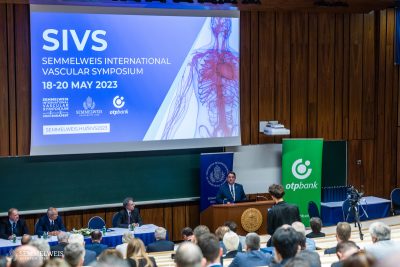 The rector added that the essence of the International Vascular Symposium is to put theoretical and practical knowledge from the most prominent authorities into practice as quickly and effectively as possible. „This is particularly relevant today, as statistics show that in Hungary cardiovascular diseases account for 49 percent of all deaths, with 64,000 people dying from cardiovascular diseases. Globally, the situation is no better: one in three people in the world dies of cardiovascular disease, which is the leading cause of overall death,” he stressed.
The rector added that the essence of the International Vascular Symposium is to put theoretical and practical knowledge from the most prominent authorities into practice as quickly and effectively as possible. „This is particularly relevant today, as statistics show that in Hungary cardiovascular diseases account for 49 percent of all deaths, with 64,000 people dying from cardiovascular diseases. Globally, the situation is no better: one in three people in the world dies of cardiovascular disease, which is the leading cause of overall death,” he stressed.
The President of the Frank J. Veith International Society also addressed the participants. Dr. Péter Gloviczki reminded that the aim of the symposium was to present the latest advances in medical, surgical and endovascular treatment of vascular diseases, vascular imaging and vascular research.
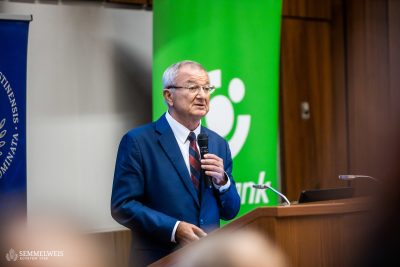 According to him, they put a special emphasis on aortic aneurysms, which is a potentially lethal condition. He also highlighted the significance of discussions on aortic dissections and lectures on carotid artery disease, especially atherosclerosis, as well as the presentation of current procedures that aim to prevent stroke.
According to him, they put a special emphasis on aortic aneurysms, which is a potentially lethal condition. He also highlighted the significance of discussions on aortic dissections and lectures on carotid artery disease, especially atherosclerosis, as well as the presentation of current procedures that aim to prevent stroke.
Dr. Gloviczki noted that lower extremity atherosclerosis results in amputations in an alarming rate, therefore their goal was to share the very best procedures on how to prevent lower extremity amputations in patients who have advanced atherosclerosis. He also referred to talks on chronic venous disease at the symposium, including the sometimes debilitating, painful venous leg ulcers, and stressed that the event introduced the latest super-microscopic lymphatic reconstructions for lymphatic oedema to those involved in the field.
The three-day symposium primarily focused on topics like the multidisciplinary management of aortic, peripheral and carotic artery diseases, venous thromboembolism, chronic venous disease, lymphedema, vascular malformations, and translational vascular research. It featured speakers from Stanford University, Mayo Clinic, Harvard University, Yale School of Medicine, University of California Los Angeles, Houston Methodist DeBakey Heart & Vascular Center, Houston McGovern Medical School, University of Tennessee Health Science Center, Albany Medical Center, Cleveland Clinic Learner College of Medicine, and New York University – Grossman School of Medicine, among others.
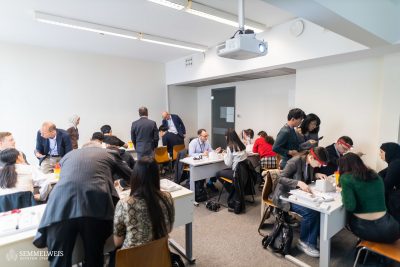 On the first day, the focus was on different workshops. Small group training sessions were held to teach the basics of vascular ultrasound along with specific arterial and venous UH training. At the endovascular courses, participants could learn about and try modern lower limb procedures, such as the CERAB technique for the treatment of chronic lower limb stenoocclusive disease, the Penumbra-Indigo aspiration system for the treatment of acute thromboembolic vessel occlusions, and modern procedures for the treatment of carotid and sub-knee arterial disease. Those interested in open vascular surgery could learn about basic suturing and optimal anastomosis techniques on a 3D printed model. The Semmelweis Grand-Prix competition started with the latter workshop, looking for the contestant who made the best anastomosis in terms of time and morphology. The winner received the prize from the competition’s founder, Dr. Péter Gloviczki, on the final day.
On the first day, the focus was on different workshops. Small group training sessions were held to teach the basics of vascular ultrasound along with specific arterial and venous UH training. At the endovascular courses, participants could learn about and try modern lower limb procedures, such as the CERAB technique for the treatment of chronic lower limb stenoocclusive disease, the Penumbra-Indigo aspiration system for the treatment of acute thromboembolic vessel occlusions, and modern procedures for the treatment of carotid and sub-knee arterial disease. Those interested in open vascular surgery could learn about basic suturing and optimal anastomosis techniques on a 3D printed model. The Semmelweis Grand-Prix competition started with the latter workshop, looking for the contestant who made the best anastomosis in terms of time and morphology. The winner received the prize from the competition’s founder, Dr. Péter Gloviczki, on the final day.
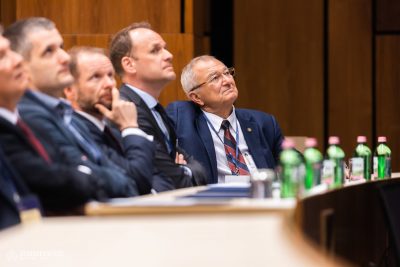 The second day of the event started with presentations on the abdominal aortic aneurysm, venous and lymphatic diseases, and participants of the poster competition presented their work as well. This was followed by a session on the aortic arch, featuring presentations by some of the most renowned experts in the field, Dr. Gustavo S. Oderich, Dr. Nikolaos Tsilimparis and Dr. Stephan Haulon. The venous session, chaired by Dr. Péter Gloviczki, presented the latest venous guidelines and the most advanced invasive and non-invasive therapeutic options for chronic venous insufficiency. In the afternoon, at the section on lower limb venous disease, Dr. Christian-Alexander Behrendt gave a presentation on the prospective GermanVasc cohort study. Later on, in addition to the vascular trauma and aortic aneurysm sessions, competitors of the best poster award for basic and translational research presented their work.
The second day of the event started with presentations on the abdominal aortic aneurysm, venous and lymphatic diseases, and participants of the poster competition presented their work as well. This was followed by a session on the aortic arch, featuring presentations by some of the most renowned experts in the field, Dr. Gustavo S. Oderich, Dr. Nikolaos Tsilimparis and Dr. Stephan Haulon. The venous session, chaired by Dr. Péter Gloviczki, presented the latest venous guidelines and the most advanced invasive and non-invasive therapeutic options for chronic venous insufficiency. In the afternoon, at the section on lower limb venous disease, Dr. Christian-Alexander Behrendt gave a presentation on the prospective GermanVasc cohort study. Later on, in addition to the vascular trauma and aortic aneurysm sessions, competitors of the best poster award for basic and translational research presented their work.
The third day of the symposium started with world-class presentations from the section on carotid artery disease. Besides comparing therapeutic modalities, the importance of pre-operative imaging studies was discussed. This was followed by a presentation on graft infections, a serious complication of vascular surgery, and subsequent treatment options. In addition to discussing more researched issues in the field of vascular surgery, speakers also presented novel topics such as robotic surgery, the importance of genetic consultation, and the cellular background of vascular diseases.
Viktória Kiss; Dr. László Hidi, Dr. Zsuzsanna Mihály, Dr. Péter Legeza
Photo: Bálint Barta – Semmelweis University
